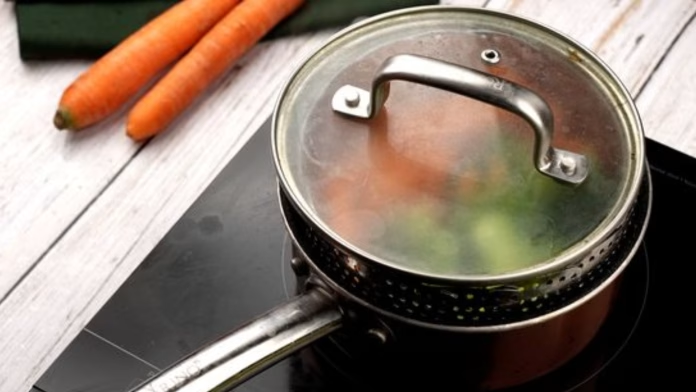Kitchen gadgets are a popular addition to any cooking enthusiast’s arsenal. From blenders to air fryers, these gadgets promise to make our lives easier and our meals more delicious. However, when it comes to steaming vegetables, you may be surprised to learn that you don’t actually need a steamer. In this article, we will delve into the surprising methods of steaming vegetables without a steamer. Get ready to say goodbye to kitchen gadgets and hello to a simpler way of steaming veggies!
The Surprising Method: Steaming Vegetables Without a Steamer
Use A Colander:
One of the easiest and most accessible ways to steam vegetables without a steamer is by using a colander. Follow these simple steps:
- Step 1: Fill a pot with an inch or two of water, ensuring that the water level doesn’t touch the bottom of the colander when placed inside the pot.
- Step 2: Bring the water to a boil over medium heat.
- Step 3: Place the colander on top of the pot, making sure it is stable and not touching the water.
- Step 4: Add your vegetables to the colander, covering them with a lid or foil to trap the steam.
- Step 5: Steam the vegetables until they reach your desired level of tenderness, typically taking around 5 to 10 minutes, depending on the vegetable.
Using a colander as a makeshift steamer is an excellent option when you don’t have access to a dedicated steamer but still want to enjoy perfectly steamed vegetables.
Use A Wire Rack:
If you have a wire rack that fits inside a pot or pan, you can use it to steam vegetables effectively. Here’s how:
- Step 1: Pour an inch or two of water into the pot or pan, making sure it doesn’t touch the bottom of the wire rack.
- Step 2: Bring the water to a simmer over medium heat.
- Step 3: Place the wire rack inside the pot or pan, ensuring it sits above the water level.
- Step 4: Arrange your vegetables on the wire rack, ensuring they are in a single layer.
- Step 5: Cover the pot or pan with a lid and steam the vegetables until they are tender, usually taking around 5 to 10 minutes.
Using a wire rack allows the steam to circulate around the vegetables, ensuring even cooking without the need for a dedicated steamer.
Use A Microwave:
Believe it or not, your microwave can be an effective tool for steaming vegetables. Here’s how:
- Step 1: Place your vegetables in a microwave-safe bowl.
- Step 2: Add a tablespoon or two of water to the bowl to create steam.
- Step 3: Cover the bowl with a microwave-safe plate or plastic wrap, leaving a small vent for steam to escape.
- Step 4: Microwave the vegetables on high power for 2-3 minutes, checking for doneness and continuing to microwave in 30-second intervals until they reach your desired level of tenderness.
Using a microwave for steaming vegetables is a quick and convenient option, especially when you’re short on time or cooking for one.
Use A Wok:
If you have a wok in your kitchen, you can utilize its versatile shape to steam vegetables without a steamer. Here’s how:
- Step 1: Fill the wok with an inch or two of water, ensuring it doesn’t touch the bottom of the steaming tray or plate.
- Step 2: Place a steaming tray or heatproof plate on top of the wok, making sure it sits above the water level.
- Step 3: Arrange your vegetables on the tray or plate, ensuring they are in a single layer.
- Step 4: Cover the wok with a lid and steam the vegetables until they are tender, usually taking around 5 to 10 minutes.
Using a wok for steaming vegetables provides an excellent alternative to a dedicated steamer, especially if you enjoy stir-frying and other Asian cooking techniques.
Tips for Successful Vegetable Steaming
Regardless of the method you choose to steam vegetables without a steamer, here are some general tips to ensure success:
- Choose the Right Vegetables: Select fresh, firm vegetables for steaming. Vegetables like broccoli, cauliflower, carrots, asparagus, and green beans are great options.
- Cut Vegetables Uniformly: Cut the vegetables into similar sizes to ensure even cooking.
- Don’t Overcrowd: Avoid overcrowding the vegetables, as this can lead to uneven cooking. If needed, steam the vegetables in batches.
- Season Lightly: Season the vegetables with salt, pepper, or your favorite herbs and spices to enhance their flavor.
- Check for Doneness: Test the vegetables with a fork or knife to ensure they are cooked to your desired level of tenderness.
Final Thoughts:
While kitchen gadgets can be fantastic tools, it’s essential to remember that not every cooking technique requires a specialized gadget. Steaming vegetables is a prime example of how you can achieve delicious and healthy results without the need for a steamer. Whether you choose to use a colander, wire rack, microwave, or wok, these surprising methods offer convenience and versatility, allowing you to enjoy perfectly steamed vegetables with ease. So, say goodbye to kitchen gadgets and embrace the simplicity of steaming vegetables without a steamer! Your taste buds and your health will thank you.





